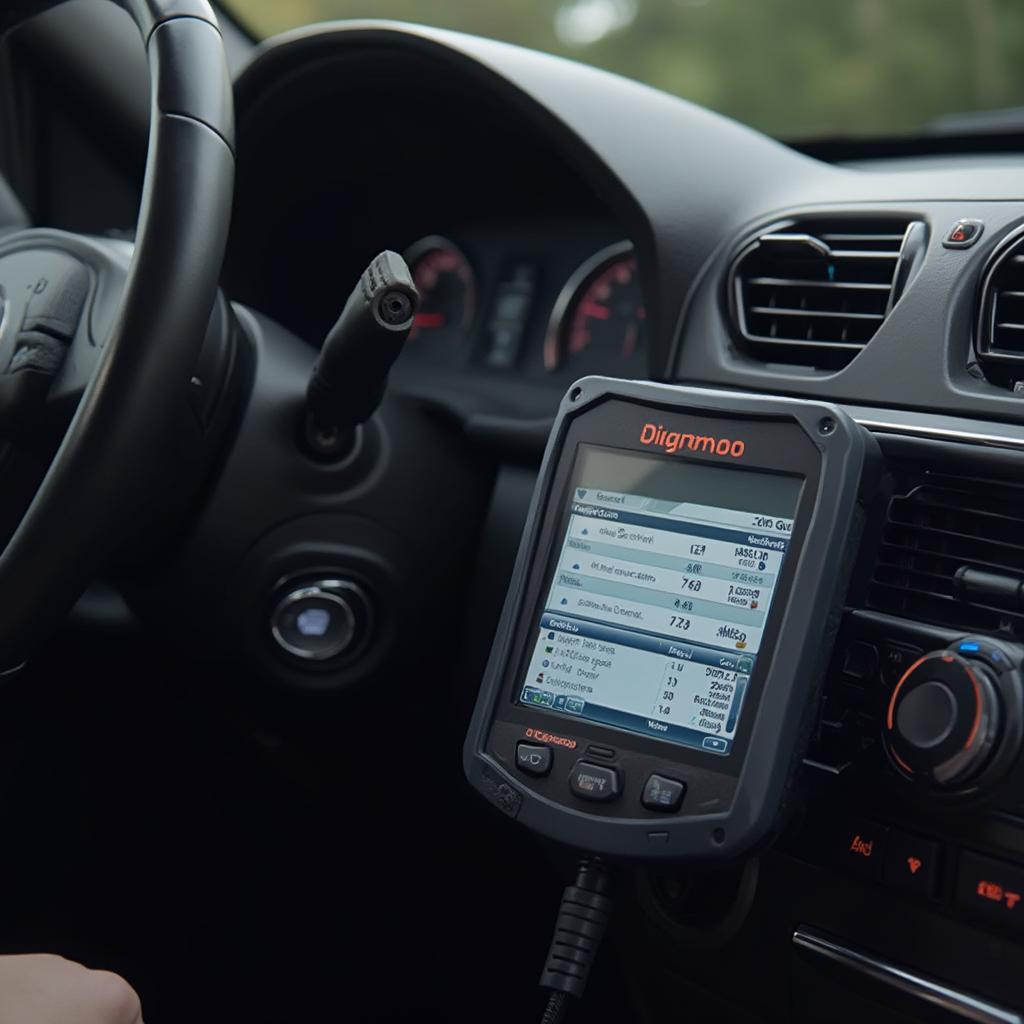The term “DLC OBD2” might sound like technical jargon, but it represents a fundamental element of modern vehicle maintenance and repair. DLC, or Data Link Connector, is the physical port in your vehicle that allows an OBD2 scanner to communicate with your car’s computer system. This connection is your gateway to a treasure trove of information about your vehicle’s health and performance.
What is a DLC OBD2 Port?
The DLC OBD2 port, often referred to simply as the “OBD2 port”, is a standardized 16-pin connector found in most vehicles manufactured after 1996. This port serves as the access point for retrieving vehicle diagnostic information via an OBD2 scanner. Think of it as the communication hub between your car’s brain and the outside world.
Why is the DLC OBD2 Port Important?
The DLC OBD2 port revolutionized vehicle diagnostics by providing a standardized way to access information from a vehicle’s Engine Control Unit (ECU). Here’s why it’s crucial:
- Check Engine Light Diagnosis: When your check engine light illuminates, the DLC OBD2 port is the first place mechanics turn to retrieve diagnostic trouble codes (DTCs). These codes pinpoint the potential source of the problem, making repairs more efficient.
- Real-Time Data Monitoring: OBD2 scanners connected through the DLC port can display real-time data from various sensors in your engine and other systems. This data is invaluable for monitoring performance, identifying developing issues, and even optimizing fuel efficiency.
- Emissions Testing: The DLC OBD2 port plays a critical role in emissions testing. It allows testers to verify if your vehicle’s emissions control systems are functioning within acceptable limits.
How to Use the DLC OBD2 Port
Using the DLC OBD2 port is straightforward with the right tool: an OBD2 scanner. Here’s a simplified guide:
- Locate the DLC OBD2 Port: In most vehicles, the port is situated under the driver’s side dashboard.
- Connect Your OBD2 Scanner: Plug the scanner’s connector firmly into the DLC OBD2 port.
- Turn On Your Ignition: Turn your car to the “on” position, but don’t start the engine.
- Access Vehicle Data: Power on your OBD2 scanner. It will communicate with your vehicle’s ECU and display the requested data, such as DTCs or live sensor readings.
 OBD2 scanner connected to the vehicle's DLC port
OBD2 scanner connected to the vehicle's DLC port
Common Uses for DLC OBD2 Scanners
The applications of DLC OBD2 scanners extend beyond basic diagnostics. Here are some common scenarios where they prove invaluable:
- DIY Repairs: Enthusiasts and DIY mechanics rely on OBD2 scanners to diagnose issues, monitor repairs, and reset the check engine light after completing a fix.
- Performance Tuning: Advanced OBD2 scanners can be used for performance tuning, allowing users to adjust certain parameters within the ECU to optimize engine output and efficiency.
- Fleet Management: Businesses with vehicle fleets utilize OBD2 scanners to monitor vehicle health, track fuel consumption, and schedule preventative maintenance.
DLC OBD2: The Future of Vehicle Diagnostics
The role of the DLC OBD2 port continues to evolve as vehicles become more technologically advanced. We can anticipate even more sophisticated diagnostic and data-logging capabilities in the future.
Expert Insight:
“The DLC OBD2 port is no longer just a tool for mechanics. It’s empowering car owners to take a proactive role in understanding and maintaining their vehicles.” – David Miller, Senior Automotive Engineer
Understanding the DLC OBD2 port and its capabilities can save you time, money, and frustration in the long run. Whether you’re a car enthusiast or simply want to be more informed about your vehicle’s health, a quality OBD2 scanner and the knowledge to utilize it are invaluable assets.
For more information about specific DLC OBD2 applications or to explore our range of high-quality OBD2 scanners, check out our articles on honda dlc to obd2, dlc3 connector vs obd2, and troubleshooting common issues like an obd2 port not working f350.